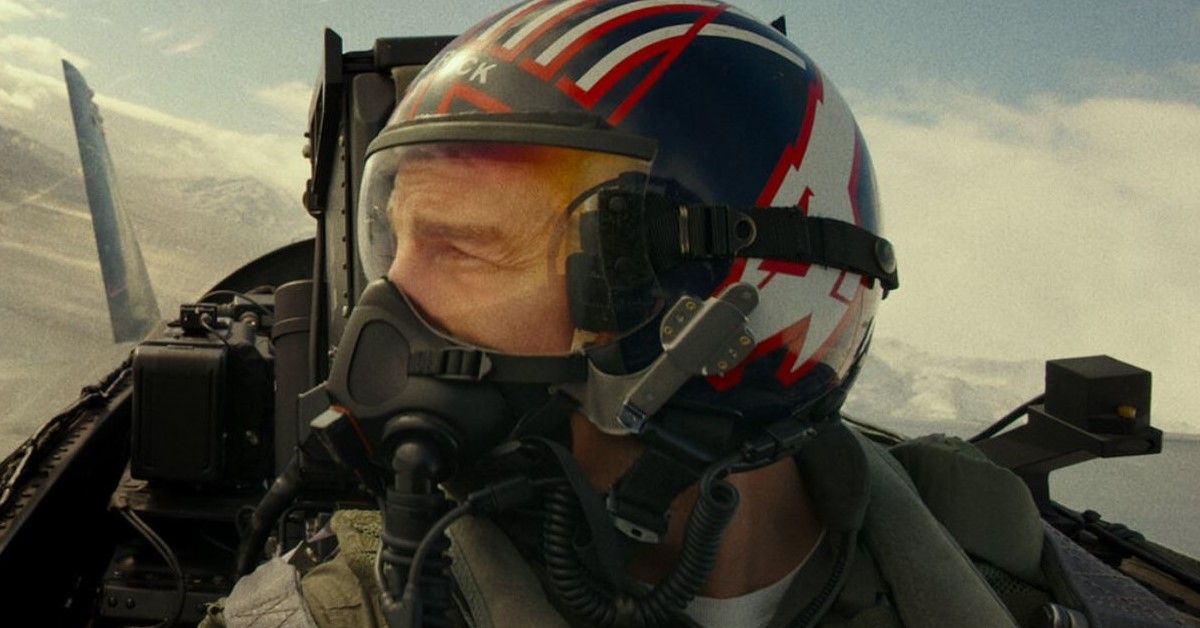Tom Cruise’s latest film, Top Gun: Maverick, is already flying high at the box office. The much-awaited film hauled in an impressive $156 million within the first four days of its release, making it Cruise’s biggest movie debut of all time. The sequel, which takes place decades after the original (Top Gun was released back in 1986), sees Cruise return to the cockpit as the fighter jet pilot Maverick.
This time around though, he is also joined by a younger but experienced cast that includes Monica Barbaro, Jay Ellis, Lewis Pullman, Glen Powell, Danny Ramirez, and of course, Miles Teller (who eventually agreed to play Goose’s son, Rooster).
Prior to the movie’s release, it was revealed that Cruise put the cast through rigorous flight training to prepare for the film. And while the A-list actor prefers to do his own stunts, it seems that the film’s most dangerous stunts were left to professionals this time around.
As it turns out, Cruise and his cast mates weren’t exactly allowed to fly the U.S. Military’s most prized fighter jets while shooting the movie.
Top Gun: Maverick Producers Started Talks With Pentagon In 2017
Prior to that year, any discussion about reviving Top Gun was practically dead in the water. But then Joseph Kosinski pitched his take on a sequel, and everything changed. Just like that, Cruise got excited about playing Maverick again.
“Joe [Kosinski] had a lookbook, a poster, and the title, Top Gun: Maverick, and then he told Tom the journey of the character and the story he wanted to tell,” Jerry Bruckheimer, who produced both Top Gun and Top Gun: Maverick, recalled. “Tom then looked at him, pulled out his phone, and called the head of Paramount at that time and said, ‘I want to make another Top Gun.’ And that was it.”
For the production to go through, Cruise had specific demands, namely that Val Kilmer reprises his role as Iceman. Meanwhile, Bruckheimer and company also held discussions with the Department of Defense (DoD) as soon as possible with the Pentagon noting that the script would be reviewed soon as it was ready.
The DoD finally received a copy of the draft sometime in April 2018, noting that there were “no major problems with the story line [sic] or characterizations.” The following month, it also noted there was “some revision to characterizations and actions of Naval aviators.” Other than that, production was anticipated to go rather smoothly with the Navy providing support to Cruise and the crew.
Pentagon Agreement Restricted Tom Cruise To The Backseat Of Its F/A-18s
Prior to the start of filming, Paramount Pictured had signed an extensive production agreement (first published by Shadow Proof) with the DoD for Top Gun: Maverick, which was using the working title Island Plaza in 2018. Among other things, the agreement discussed the extent of support that the Navy would provide while filming is taking place.
During filming, the cast and crew were allowed access to a “Nimitz-class nuclear-powered aircraft carrier” for flight operations scenes. The production company’s own patriot jet was also authorized to do “rehearsal flights” and carry out “principal aerial photography” for the movie. At the same time, it allowed for several internal and external cameras to be placed onboard F/A-18 E/F Super Hornets.
Meanwhile, the Cruise and several cast members were also provided with water survival and ejection seat training before they could be allowed to do any aerial scenes. As Bruckheimer once described, “They were put in a fuselage, they were blindfolded, they were dumped in the water, they were rolled over, and they had to figure out how to get out of that cockpit, blindfolded.”
Selected cast members also had to do some “aerial training with g-force tolerance,” which went on for three grueling months.
As far as the actual aerial scenes go, however, the DoD made it clear in its agreement that actors would only “fly in the backseat of F/A-18F Super Hornets” during filming. Moreover, it specified that “select pilots will be allowed to be filmed in the cockpit of aircraft during flight sequences” for Top Gun: Maverick. According to a report from Fortune, it is also likely that Paramount had to pay up to $11,374 an hour for the Navy pilots’ services.
At the same time, it is also worth noting that the DoD did allow Paramount to borrow six F/A-18 Tactical Operational Flight Trainer Seats “to photograph and use all such Seats in connection with the Picture” so that may explain how the movie ended up with such realistic visuals inside the jet.
As Top Gun: Maverick continues with its theatrical run, many anticipate that the film would go on to become the biggest movie of the year. In hindsight, it doesn’t really matter who’s piloting the jet. Cruise can make this movie soar from the backseat just as well.

